By Walt Flippo and Bob Rajabi
Walt Flippo is Senior Application Engineer and Bob Rajabi is Engineering Manager at Hydraulic Accumulator Div Parker Hannifin Corp.
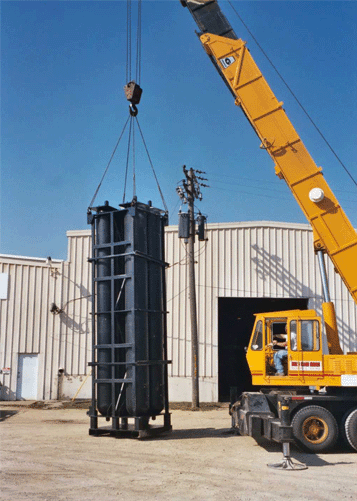
This rack has four, 350-gal, 4,000-psi back-up gas bottles used to reduce the size and cost of a large hydraulic system for the entertainment industry.
Hydropneumatic accumulators are widely used in hydraulic systems, holding stored power for peak demand. Now, they can be supplemented with gas bottles to reduce the cost and size of your hydraulic system.
Accumulators have long been used to supplement pump flow, providing such benefits as leakage compensation, shock suppression, thermal expansion and holding applications. In mobile applications, accumulators are used for ride control, steering, energy recovery, dead-engine pilot, supplementing pump flow in pilot lines, track take-up tensioning and hitch cushioning. Accumulators often allow the use of smaller pumps, motors, and reservoirs.
Auxiliary gas bottles can be used as gas capacitors with hydraulic accumulators to significantly reduce accumulator cost. This approach is attractive where large accumulators are required. For example, die-casting and plastic injection-molding machines may require large 100-gal accumulators, which are costly. But a back-up gas bottle may permit the use of a smaller accumulator, saving money and space. Here’s how.
Accumulator types
Accumulators use compressed gas to apply force to hydraulic fluid. Identical in their operating principle, piston, bladder and diaphragm accumulators use different mechanisms to separate the gas from the fluid.![]()
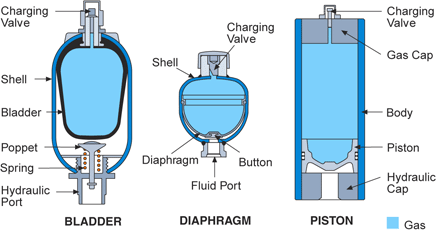
Even though they are identical in operating principle, piston, bladder and diaphragm accumulators use different mechanisms to separate gas from fluid.
Piston accumulators have a cylindrical body sealed by a gas cap with a charging valve at the gas end, and a hydraulic cap at the fluid end. A lightweight piston separates the gas and
hydraulic sides. This type is efficient and units come in a range of bore sizes from 1.5 to 20 in. and flows from 100 to over 500 gpm. Advantages include high flow rates, a wide temperature range, high compression ratios, and the ability to withstand external forces. Piston units work well with auxiliary gas bottles.
Bladder accumulators feature a non-pleated, flexible rubber bladder housed within a steel shell. One end of the bladder has a valve stem fitted with a gas valve. A poppet valve, normally held open by a spring, prevents the bladder from being extruded out the hydraulic port during shutdown. The units suit most applications, are dirt tolerant, respond quickly, and work well with water and low-lubricity fluids.
Auxiliary gas bottles for bladder accumulators are the same shape and size as the bladder accumulator for sizes up to 15 gal. Standard bladder accumulators are not recommended for use with back-up gas bottles, due to the possibility of bladder failure. To use back-up gas bottles with bladder accumulators, a transfer barrier is recommended. Piston accumulators are generally preferred to bladder units for use in gas-bottle installations.
Diaphragm accumulators use a one-piece molded diaphragm mechanically sealed to a high-strength metal shell. The flexible diaphragm separates gas and fluid, and a button molded to the bottom of the diaphragm prevents it from extruding out the hydraulic port. These units are compact and lightweight, simple, inexpensive, dirt tolerant, and respond quickly. Because diaphragm accumulators have small gas capacities (5 to 300 cu in.), their use with auxiliary gas bottles is neither recommended nor cost-efficient.
Larger capacity, larger savings
Gas bottles save the most cost and space when used in large-capacity applications. Remote back-up gas storage offers installation flexibility where the available space or position cannot accommodate an accumulator of the required size. In such instances, a smaller accumulator can be used in conjunction with one or more gas bottles. Generally, gas bottles are placed into a system when accumulator capacity reaches approximately 30-gal capacity.
For example, an application that calls for a 30-gal accumulator may only actually require 8 gal of fluid output. Hence, this application could be satisfied with a 10-gal accumulator and a 20-gal gas bottle. Typical piston-accumulator/gas-bottle applications are common in injection-molding and die-casting machines.
Another example: Assume that a 45-gal accumulator is required for a die-casting application. Further assume that the maximum and minimum system pressures are very close, and where only 4.4-gal of fluid is required from the accumulator. To compare costs, assume the price of a 45-gal accumulator is approximately $14,000. Use of a 15-gal accumulator and two 15-gal gas bottles will reduce the accumulator cost by $5,770. The added advantage is that gas bottles very seldom require maintenance. And another advantage of using gas bottles is that they can be remotely mounted, laid on their side, or mounted in any orientation. Therefore, instead of using a very large accumulator that might weigh up to 2,100 lb, supplemental gas bottles permit the use of a smaller unit weighing less than 700 lb.
Additionally, there is a saving in seal kit cost. Seal kits for a large 50-gal accumulator can cost $1,000 (depending on the compound), whereas the seal kit for a 15-gal accumulator is less than half that amount.
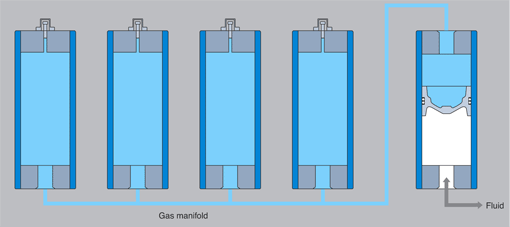
Several gas bottles can supply precharge pressure to a single accumulator.
Not usually for mobile applications
Most mobile hydraulic applications use smaller piston accumulators, generally less than 5-gal capacity. One of the few exceptions is large off-highway trucks, where three pieces of an 11-gal bladder accumulator are often used for steering. Off-highway service and park-brake applications generally use 5-gal piston accumulators.
Bladder accumulators in the 11- and 15-gal range are used on off-highway trucks to save weight and cost. Bladder units are about one-half the weight of the same size piston unit. These are 3000 psi, ASME-approved units that can be rated for 4000 psi. (Those ASME rules do not apply to piston accumulators, as they are not built from a forged vessel. As a result a true 3200-psi piston unit must be used at more than double the cost, plus additional weight. Check with your accumulator supplier or ASME to ensure compliance with these key safety rules.)
Again, the use of back-up gas bottles in mobile applications is limited. One atypical application involves four integrated struts in the suspension of a rock mining scaler. This application integrates cylinder and accumulator technologies into a compact, robust piston design in a virtually leak free 4,000-psi nitrogen chamber. Here, the cylinder acts as a strut in the suspension system with pressurized nitrogen gas serving as the active shock absorber. The stored energy acts like a spring to absorb shock – a perfect fit for mobile equipment with demanding high-force loads. In this suspension application the cylinder OD is 7.5 in. with a 30-in. length when extended. This allows for only a 3-in. clearance from the top of the strut to the undercarriage. Because cylinder length was limited due to space constraints, a remote auxiliary gas bottle ensured sufficient nitrogen gas capacity for the vehicle’s initial loading.
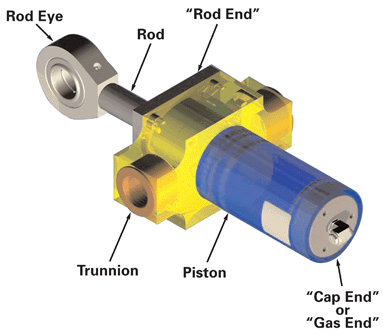
Parker GAStrut integrates an accumulator and a cylinder into a robust design with a compact envelope. The cylinder acts as a strut in the suspension system while pressurized nitrogen gas serves as the active shock absorber.
Sizing Gas Bottles
Generally, accumulators are sized 5% over need for the application. Because the accumulator has a separator in it (piston or bladder), you would normally put a 100-gal accumulator/gas bottle combination in an application that only requires 95 gal of fluid going in and out of the accumulator. The key to sizing an accumulator with a gas bottle is to make sure that the accumulator will accommodate 110% of the amount of fluid required by the system.
The gas bottle is sized by the following formulas:
For piston accumulators:
(Gas bottle size, gal) = (accumulator size, gal) – (required output from accumulator size x 1.1, gal)
Note: Select an accumulator large enough to accommodate the discharged fluid since the separator between the fluid and gas is located in the accumulator. Also, use the same port on the gas end as the port on the hydraulic side; keeping the piping large between accumulator and gas bottle(s) assures that the gas will not heat up due to restrictions in the gas line.
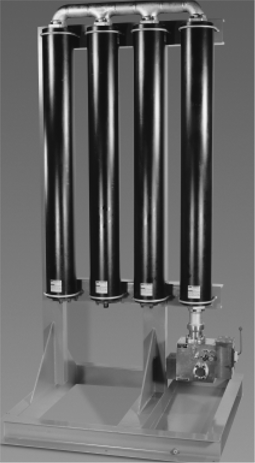
Large piston designs are not generally available. An alternative is to use several gas bottles. This photo shows an accumulator manifold with three gas bottles attached to a transfer-barrier-type piston accumulator.
For transfer-barrier bladder accumulators:
(Gas bottle size, gal) = (accumulator size, gal) – (required output from accumulator size x 1.3 gal)
Note: The transfer barrier should never be filled with more than 80% of the capacity of the transfer barrier. Example: 15-gal X 0.80 = 12 gal Since the gas port is restricted to about a 3/8-in. inside diameter, flow from the hydraulic port will be restricted to about a 45-gpm-flow rate.
Sizing software streamlines the process of specifying hydraulic accumulators. You enter application requirements, and the program guides them through a step-by-step selection process. The software should include a precharge tool that calculates the effects of temperature on pressure. Another tool can calculate the capacity of an existing accumulator based on operating conditions. And, you can size accumulators for various applications including supplementing pump flow, auxiliary power source, holding/leakage compensation, shock suppression, piston-pump pulsation dampening, and attenuating shock.
Large/multiple accumulators
The requirement for a 90-gal or larger accumulator cannot usually be met by a single unit, because larger piston designs are not generally available in these sizes. The requirement can, however, be met using several gas bottles. These bottles serve a single piston accumulator through a gas manifold. The accumulator portion may be sized outside the limitations of the above formula, but should not allow the piston to strike the caps repeatedly while cycling. The larger gas volume available with this configuration allows a relatively greater piston movement –and hence fluid output–than with a conventionally sized single accumulator. A further advantage is that, because of the large precharge ‘reservoir,’ gas pressure is relatively constant over the full discharge cycle of the accumulator. The major disadvantage of this arrangement is that a single seal failure could drain the whole gas system.
Parker Hannifin Corp
www.parker.com/accumulators
:: Design World ::
Filed Under: Hydraulic equipment + components, FLUID POWER


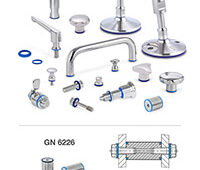
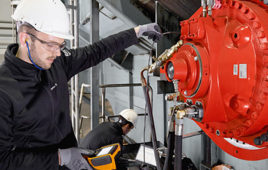
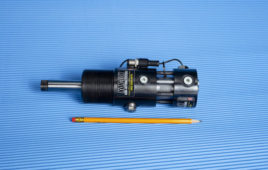
What is the shelf life of sugarcane juice at room Temperature. If the same juice is rotated after some intervals then what is the shelf life of the same.